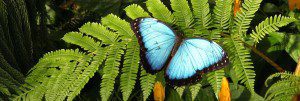By · Comments (0) · Tuesday,October16th,2012

The tentacles of world trade, globalization and human development are stretching deeper into the heart of the Amazon River Basin as construction of the Southern Interoceanic Highway progresses.
While some view the historic Southern transcontinental road and bridge-building project as a beacon of hope and development akin to the building of the Panama Canal or President Eisenhower’s System of Interstate and Defense Highways, others see it as a dagger through the heart of the Amazon Basin, home to the world’s greatest concentration of indigenous peoples and its richest source of biodiversity, as well as the Andean watershed, which provides critical water resources for all forms of life and activity on both sides of the continental divide.
Through the Amazon Rainforest to the Pacific
Construction of the Southern Interoceanic Highway is proceeding across all five segments and both sides of the Brazil-Peruvian border, which is to connect Peru’s Pacific Ocean ports in San Juan de Marcona with Brazil’s Amazon Basin ports and cities in the City of Rio Branco Special Export Zone and beyond to Puerto Velho, which sits beside the Madeira River, a major tributary of the Amazon.Little in the way of open, public or outside expert consultation or democratic process was undertaken in developing and launching the South America transcontinental road and bridge-building project, which was driven forward by the respective national governments. Then President Lula da Silva of Brazil and Alejandro Toledo of Peru signed the historic Southern Interoceanic Highway agreement in 2004, and contracts to build it were awarded back in 2006. In all, some 2,600 kilometers (1,625 miles) of new roads and 22 bridges will be built, mostly in Peru as Brazil’s portion of the Interoceanic Highway already existed.
A consortium of local, regional and international environmental, climate change and sustainable development groups have joined together to try to assure that besides goods, products and people, the Southern Interoceanic Highway doesn’t bring massive deforestation, biodiversity and ecosystems destruction from spreading well beyond the length and breadth of the transcontinental highway itself.
REDD+ to the Rescue?
Working together within the context of the UN’s as yet evolving REDD+ (Reducing Emissions from Deforestation and Forest Degradation) Program in southeastern Peru, the groups have established the Madre de Dios Amazon REDD Project. The project area spans some 100,000 hectares (~247,000 acres) of Peruvian Amazon rainforest less than 30 kilometers (18.75 miles) from the Southern Transoceanic Highway in one of the world’s biodiversity hotspots—the Ecological Corridor Vilacamba-Amboro.Aiming to prevent illegal logging, conserve biodiversity and ecosystems services, project partners are providing surveillance services and working with local communities on sustainable development projects to enhance living conditions and quality of life that don’t compromise the integrity of the rainforest ecosystem–services Peru’s government isn’t providing.Central to project partners’ sustainable development efforts is the emerging concept and rubric of Payments for Ecosystem Services (PES), which aim to monetize the value of the essential life support services–materials, food, medicines, clean water and air, biodiversity habitat, etc.–that natural ecosystems provide. The pioneering REDD+ project’s methods and processes have been independently verified and qualified by voluntary sustainable forestry, biodiversity conservation and carbon offset organizations.
Included in the project group are Dublin-based NGO Greenoxx, Amazon region sustainable forest management groups Maderacre and BAM (Bosques Amazonicos), Ecodes and WWF
Double Voluntary Carbon Credit Standard Validation
On Sept. 20, the Madre de Dios Amazon REDD Project achieved validation according to VCS (Verified Carbon Standard), becoming the first REDD project in the Peruvian Amazon to have earned validations from two international voluntary carbon offset standard-setting organizations—the CCBA (Climate, Community & Biodiversity Alliance) CCB Gold as well as VCS– for its tropical forest conservation and carbon storage management.The VCS standard guarantees the Madre de Dios REDD Project’s carbon accounting, while the CCB standard validates it as a project of “exceptional social and environmental characteristics.” In addition, the project has been registered with Markit Environmental Registry Platform to ensure the transparency of carbon credits the project has and is earning, with Scientific Certification Systems (SCS) certifying each of the project’s aspects.Greenoxx in May 2010 sold the first 40,000 tons of CCB Gold CO2 credits at $7 per ton, the proceeds of which will be invested back into the project. As a Chicago Climate Exchange (CCX) carbon offset aggregator, GreenOxx NGO is responsible “for the elaboration and registration” of Madre de Dios REDD Project carbon credits sold on CCX, as well as “submitting them for approval before the CCX Forestry Committee.”
“The conclusion of this analysis is that obtaining revenue for the environmental services that the rainforest offers is the only way to preserve these areas. This approach has great potential to generate sources of additional income for local population with low income, contributing therefore to improve their way of life,” according to the Madre de Dios REDD Project’s Project Design Document.Main image credit: Greenoxx

Nenhum comentário:
Postar um comentário